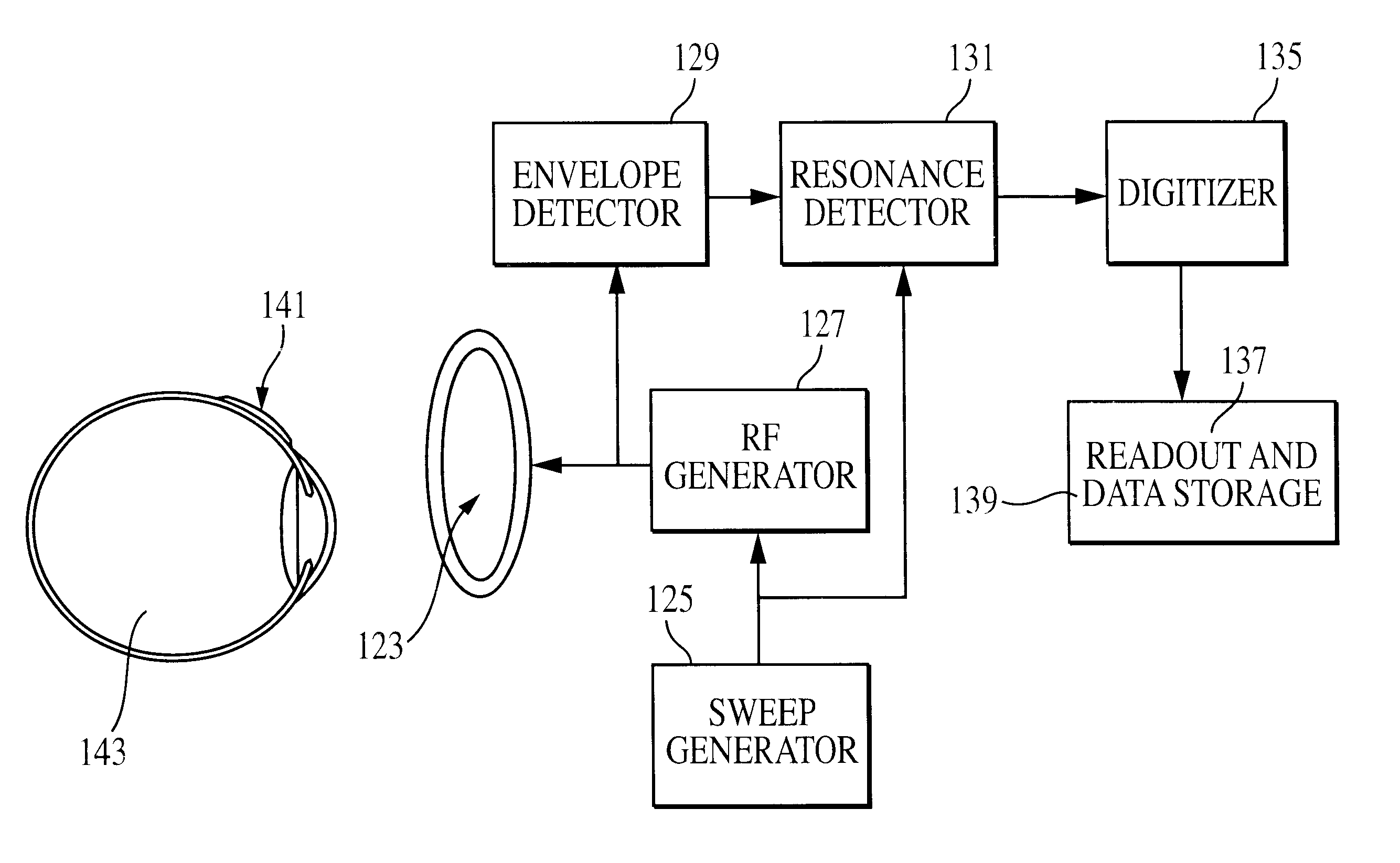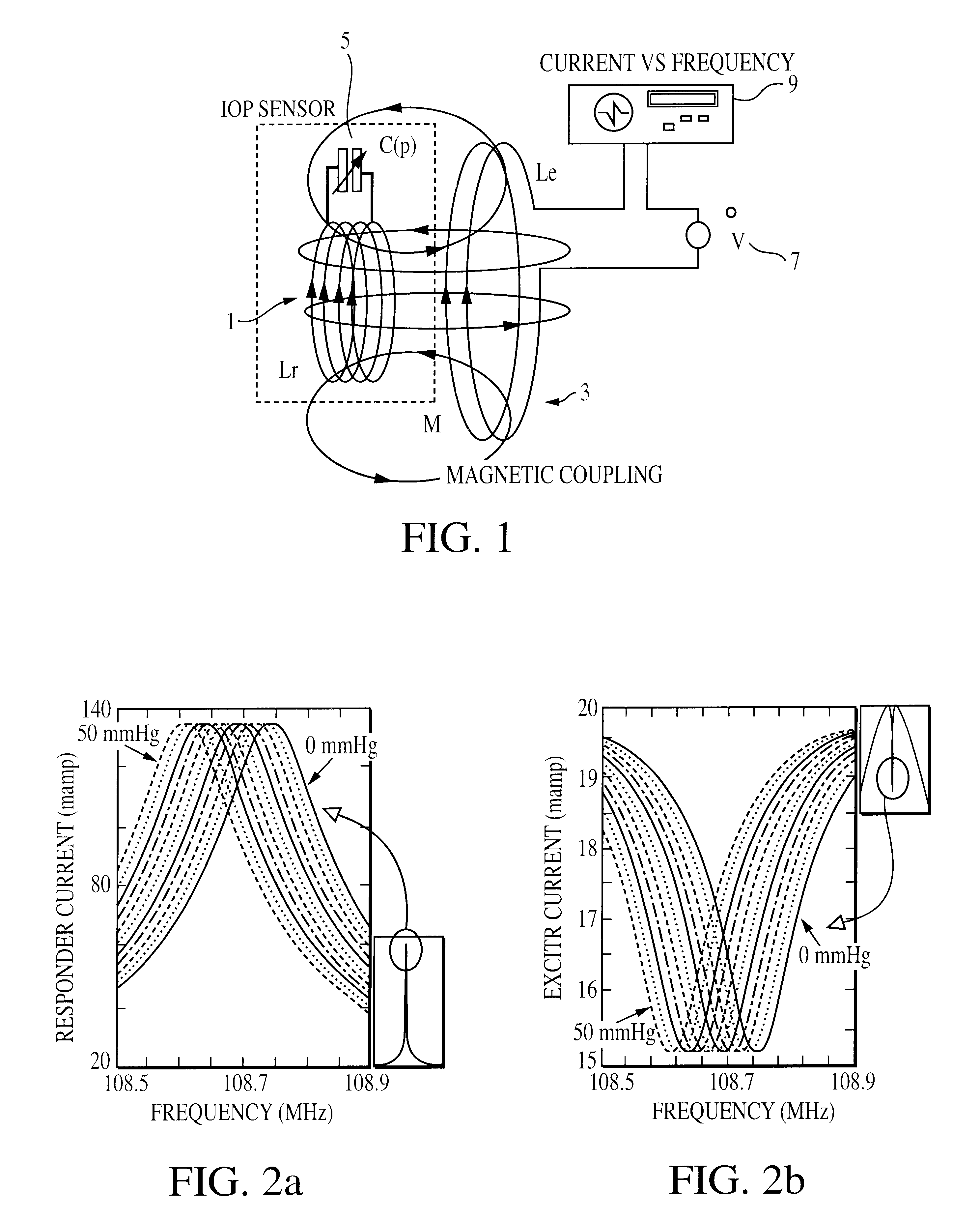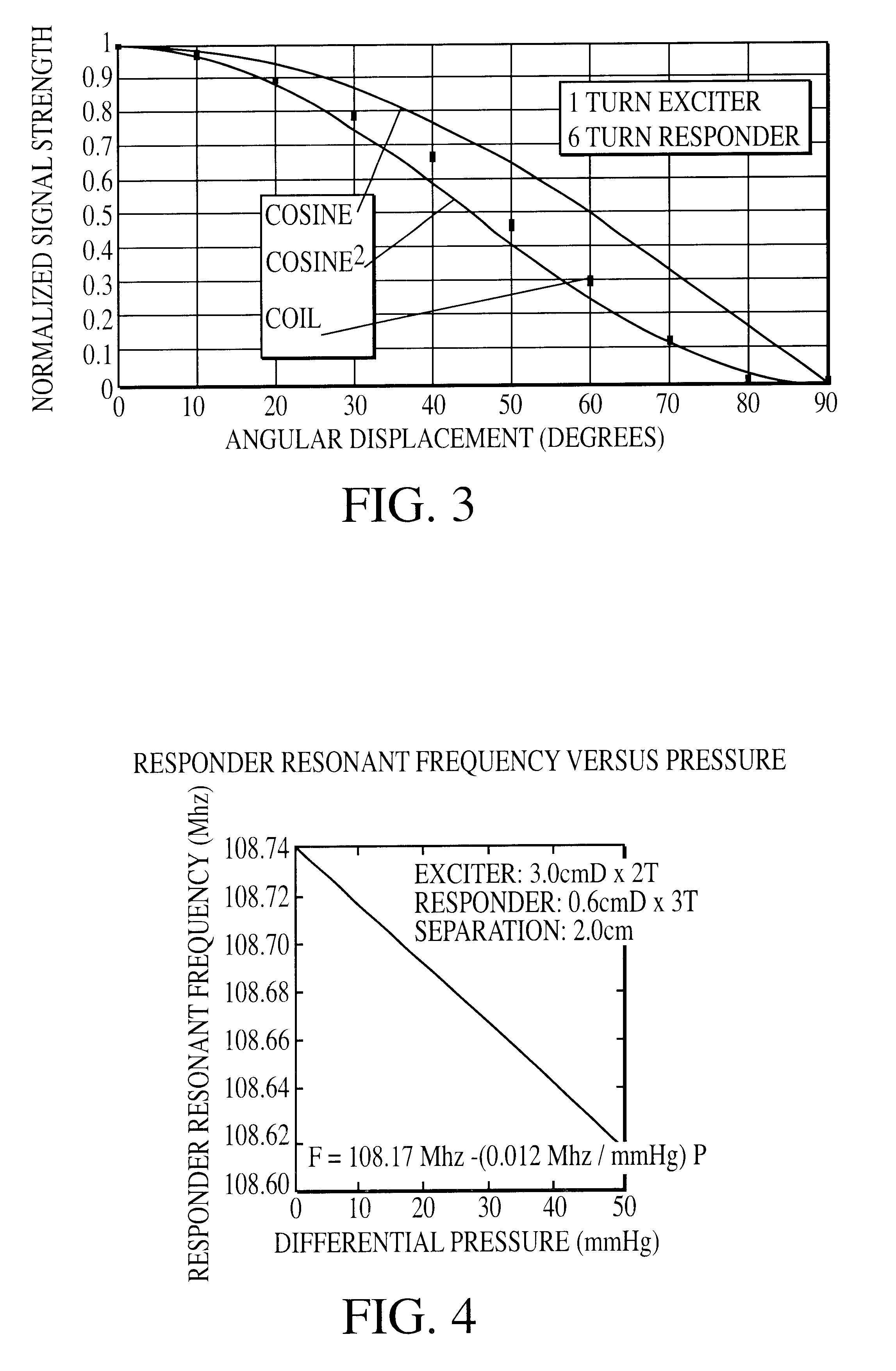Method for monitoring intraocular pressure using a passive intraocular pressure sensor and patient worn monitoring recorder
a passive intraocular pressure sensor and monitoring recorder technology, applied in the field of monitoring intraocular pressure, can solve the problems of not offering the features desired for certain ocular research and therapy
- Summary
- Abstract
- Description
- Claims
- Application Information
AI Technical Summary
Benefits of technology
Problems solved by technology
Method used
Image
Examples
Embodiment Construction
)
The present invention greatly enhances a physician's ability to treat a patient suffering from end-stage glaucoma or other ill effects of elevated intraocular pressure by providing the physician with the capacity to continuously monitor IOP. A significant advantage of the present invention is that the patient need not visit the physician to have their intraocular pressure monitored. In fact, information concerning a patient's intraocular pressure may be delivered to a physician over data communications networks such as a telephone and an internet appliance.
A significant benefit of the present invention is that it overcomes problems and doubts concerning indirect determination of intraocular pressure. Indirect measurements are suspect at least in part because of concerns related to correlation, accuracy, and consistency in relating measurements to actual aqueous humor hydrostatic pressure.
By permitting continuous outpatient monitoring of intraocular pressure, the present invention p...
PUM
 Login to View More
Login to View More Abstract
Description
Claims
Application Information
 Login to View More
Login to View More - R&D
- Intellectual Property
- Life Sciences
- Materials
- Tech Scout
- Unparalleled Data Quality
- Higher Quality Content
- 60% Fewer Hallucinations
Browse by: Latest US Patents, China's latest patents, Technical Efficacy Thesaurus, Application Domain, Technology Topic, Popular Technical Reports.
© 2025 PatSnap. All rights reserved.Legal|Privacy policy|Modern Slavery Act Transparency Statement|Sitemap|About US| Contact US: help@patsnap.com



